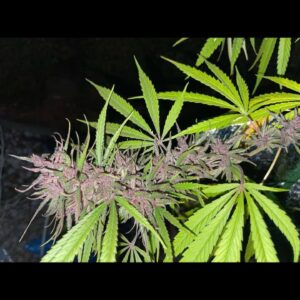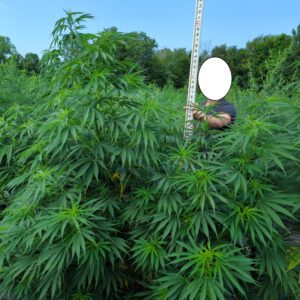Sativa-type cannabis landraces. True landrace Sativas are tropical landraces that were domesticated over many centuries for producing ‘ganja’ – i.e., sinsemilla or semi-sensi. Centuries of individual plant selection is why real Sativas are the most potent type of landrace.
The classic Sativas of the ‘vernacular taxonomy’ are the narrow-leafleted, late-maturing landraces from tropical regions such as Thailand and Kerala. Their original centre of domestication is probably the Bay of Bengal and its peripheries.
The so-called ‘sinsemilla technique’ of roguing out males is strongly implied in a Nath Shaiva alchemical text from 15th Century southeast India called the Ānandakanda (आनन्दकन्द) or ‘Root of Bliss’. See this post on The Alchemical Roots of the Sinsemilla Technique.
Formally, true landrace Sativas are best classified as subsp. indica var. indica.
By contrast, although Himalayan varieties exhibit morphology similar to real Sativas, these alpine landraces are usually earlier maturing and exhibit high levels of bast fibre. Their cannabinoid profiles are typically closer to those of Central Asian landraces – i.e., moderate levels of THC and substantial overall CBD.
Some populations from traditional hashish-producing regions such as the Hindu Kush and the Near East can also exhibit Sativa-type characteristics. The morphology of landraces such as Mazari or Sinai, for example, ranges from Indica to Sativa. Since prohibition in the 1920s, Greek cannabis heirlooms have undergone decades of selection for use as sinsemilla.
Historically, around Central Asia, hybridization appears to have occurred between the two formal domesticated varieties of subsp. indica, namely var. indica (Sativas) and var. afghanica (Indicas).
Showing 1–16 of 45 results
-

Arcadian
Price range: £40.99 through £81.49 Select options This product has multiple variants. The options may be chosen on the product page -

Bokeo #2
Price range: £16.49 through £32.99 Select options This product has multiple variants. The options may be chosen on the product page -

Burmese
Price range: £26.49 through £52.99 Select options This product has multiple variants. The options may be chosen on the product page -
Sale!

Central Lao
Price range: £8.74 through £17.49 Select options This product has multiple variants. The options may be chosen on the product page -

Champasak
Price range: £11.49 through £22.99 Select options This product has multiple variants. The options may be chosen on the product page -

Congolese
Price range: £23.49 through £46.99 Select options This product has multiple variants. The options may be chosen on the product page -

Cretan
Price range: £36.99 through £73.49 Select options This product has multiple variants. The options may be chosen on the product page -
Sale!

Dakshinkali
Price range: £7.24 through £14.49 Select options This product has multiple variants. The options may be chosen on the product page -

Gorkha Nepali
Price range: £7.49 through £14.99 Select options This product has multiple variants. The options may be chosen on the product page -

Highland Lao #5
Price range: £11.49 through £22.99 Select options This product has multiple variants. The options may be chosen on the product page -

Highland Lao #6
Price range: £11.49 through £22.99 Select options This product has multiple variants. The options may be chosen on the product page -

Highland Lao #7
Price range: £15.49 through £30.99 Select options This product has multiple variants. The options may be chosen on the product page -

Highland Thai
Price range: £22.49 through £44.99 Select options This product has multiple variants. The options may be chosen on the product page -

Hmong Ganja
Price range: £11.49 through £22.99 Select options This product has multiple variants. The options may be chosen on the product page -

Humla Jungli
Price range: £9.44 through £18.99 Select options This product has multiple variants. The options may be chosen on the product page -
Sale!

Iranian #2
Price range: £11.24 through £22.49 Select options This product has multiple variants. The options may be chosen on the product page